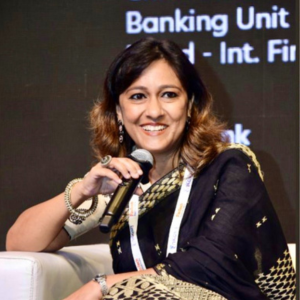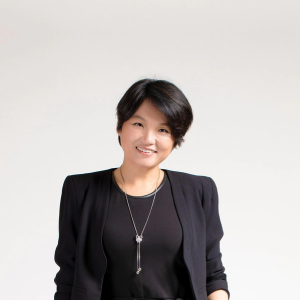 This month, the Glass Hammer is doing a Spotlight on Asia to provide an update on gender disparity in the financial technology world of Asia as well as highlight some of fintech’s top women leaders.
This month, the Glass Hammer is doing a Spotlight on Asia to provide an update on gender disparity in the financial technology world of Asia as well as highlight some of fintech’s top women leaders.
Changes in Women Executives
According to Grant Thornton’s Women in Business Report, for the first time all regions of the world have surpassed 30% of women holding senior management positions while the global average comes to 32.4%. The Association of Southeast Asian Nations (ASEAN) had the largest jump in women leaders from 37% to 40% making it among the top 2 regions for women in senior roles. APAC has increased to 32% and has outpaced North America (31%) for the first time in 5 years. It was found that India played a large role in this increase thanks to the 2020 government mandate that companies over 1000 employees must have at least one independent female director as well as the mandate for a minimum of six months maternity leave.
The Global Board Diversity tracker found that 84% of companies in Asia have at least one woman as a board member which increased from 73% in 2020 but still lags behind the global average of 93.4%. When looking at companies with at least two women, the percentage drops to 45.4% (78.3% globally) and with at least three the number drops to 17.5% (59.8% globally). Overall, women hold 14.8% of board seats in Asia, up nearly 3 percentage points since 2020. Comparatively, however, Asia is still trailing the global percentage of 26.9%.
Even if the numbers are not on par with the global average, they are still headed in a positive direction. While the numbers of women in leadership are increasing in Asia, some industries are doing worse than others. The technology industry is found to have the weakest profile of gender diversity at all levels. In Singapore, only 6% of executives are women and only 15% of board directors in tech are women. And worse, in Hong Kong, only 5% of executives are female and only 10% of directors are women. But Singapore and Hong Kong are not the only countries with prominent disparities in technology. Indonesia has the lowest share of women at any level employed at technology companies with only 22% compared to the women in the workforce at 32%.
The Boston Consulting Group and Singapore’s Infocomm Media Development Authority found that there are three “moments of truth” playing a key role in women pursuing careers in technology. These moments are their choice of major at university, their first job selection, and their decision to stay in technology as their career advances. The research provides suggestions as ways to combat the moments of truth for young women which include introducing the idea of technology as a major to high school aged girls to increase familiarity, providing programs that link university students to companies, and creating learning and development opportunities for women already in technology.
Though there are low numbers of women executives in technology in Asia, there are still trailblazing women leading technology companies in Asia. We chose three of the top leaders who are at the forefront of the industry to highlight. These three were all named among the Top 25 Women in Financial Technology of Asia in 2020 by the Financial Technology Report.
Paroma Chatterjee
Paroma Chatterjee is currently the CEO of Revolut which is a digital banking service app that includes many services like transferring money in 29 currencies, a debit card that enables cash withdrawal, crypto currency, as well as overseas medical insurance. Chatterjee received a Bachelor’s in Science with honors in physics from St. Xavier’s college then went to the Indian Institution of Management, Lucknow for a Post Graduate Diploma in Management. She began her career as a management trainee at Procter & Gamble. She then held multiple leadership roles at various companies before becoming Chief Business Officer at Via.com and Lendingkart. Now, Chatterjee is the CEO of Revolut where she builds and leads the company’s subsidiary in India. She hopes to continue to develop the subsidiary and build a talented team of people.
Cerulean Hu
Cerulean Hu is the Senior Vice President of Blockchain Engineering at Crypto.com in Hong Kong. Hu received a Bachelor of Engineering degree from the University of Hong Kong before starting financial technology journey as developer in algorithmic trading at HBSC. From there she became a software engineer at ANX International where she was also a team lead in finance and trading systems. She moved on to work at Equichain and FINCOVA as a senior software engineer. Then, in 2018 she joined Cyrpto.com as a Lead Blockchain Engineer and worked her way up to Executive Vice President of Blockchain Engineering. Crypto.com is an alternative to traditional financial service with the belief that “it is your basic right to control your money, data, and identity.” The company has 80 million users in 90 countries and offers products like the Crypto.com app and Visa card. Hu has been in this position for over a year and uses her previous leadership experience to continue to grow her team and in doing so, the company.
Jessica Tan
Jessica Tan is the Co-CEO, Executive Director and Executive Vice President at Ping An Group, China’s largest non-State owned conglomerate by revenue with an expansive portfolio including healthcare, financial services and automobile services. Tan completed her university schooling at the Massachusetts Institute of Technology where she received a Bachelor’s of Science in both economics and electrical engineering as well as a Master’s degree in computer science and electrical engineering. She began her career at McKinsey & Company as a consultant before working hard and being promoted to partner. She later joined Ping An Group as the chief information officer and worked her way up to the position of Co-CEO she holds today. Ping An groups hopes to expand their technologies globally and Tan hopes to help globalize professional services, such as the ability for remote doctors as seen with remote teachers. Outside of Ping An, Tan also holds memberships with the Monetary Authority of Singapore and the Securities of Future Commissions. She was also ranked 2nd Fortune’s Most Powerful Women’s international section while also making Forbes Power Women list in 2020.
It May Take Time, But It’s Worth It
While these successful women show advancement of women in Asia to high management positions is not impossible, it remains very uncommon. However, global research has shown that there is a positive correlation between companies in the top quartile of gender diversity and outperforming the other quartiles, from a total-return-to-shareholder’s perspective. These companies are 25% more likely to outperform lower ranked companies and better financial returns. When women match men’s participation in the workforce there is the potential for a significant financial gain. It is estimated to be roughly $12 trillion, or about 11% of the global GDP, lost while gender disparity is still present. Katie MacQuivey quoted in the Grant Thornton study, “It’s crucial that companies build a pipeline of diverse leadership across all levels and invest in long term programs to ensure success isn’t only focused on one point in time.” Having more women in executive positions would not only be beneficial to women but to the companies’ bottom lines.
By Chloe Williams








